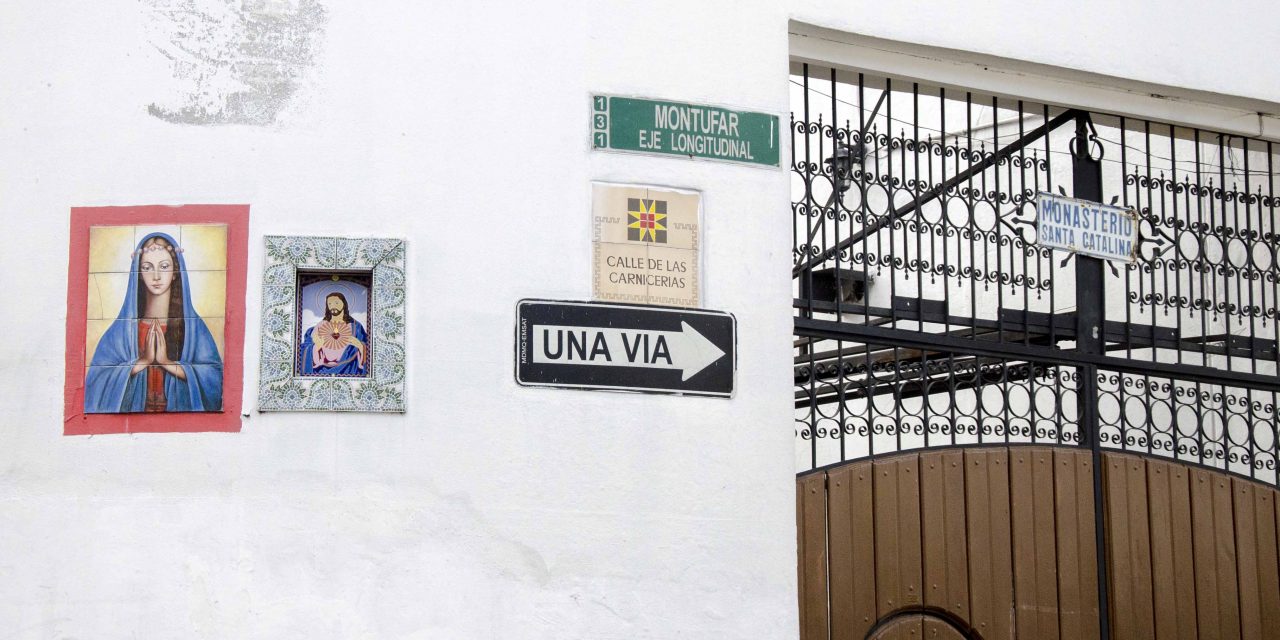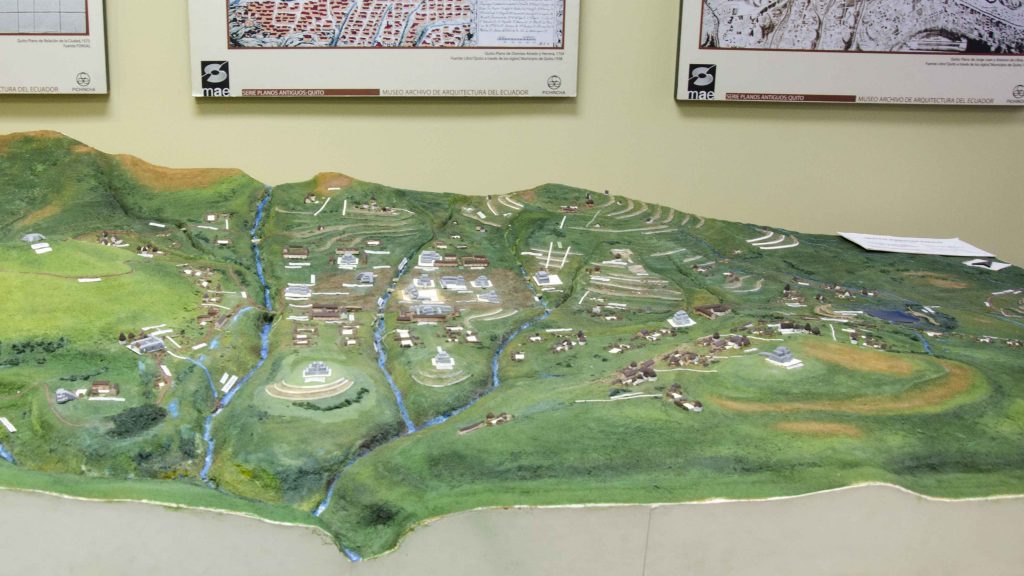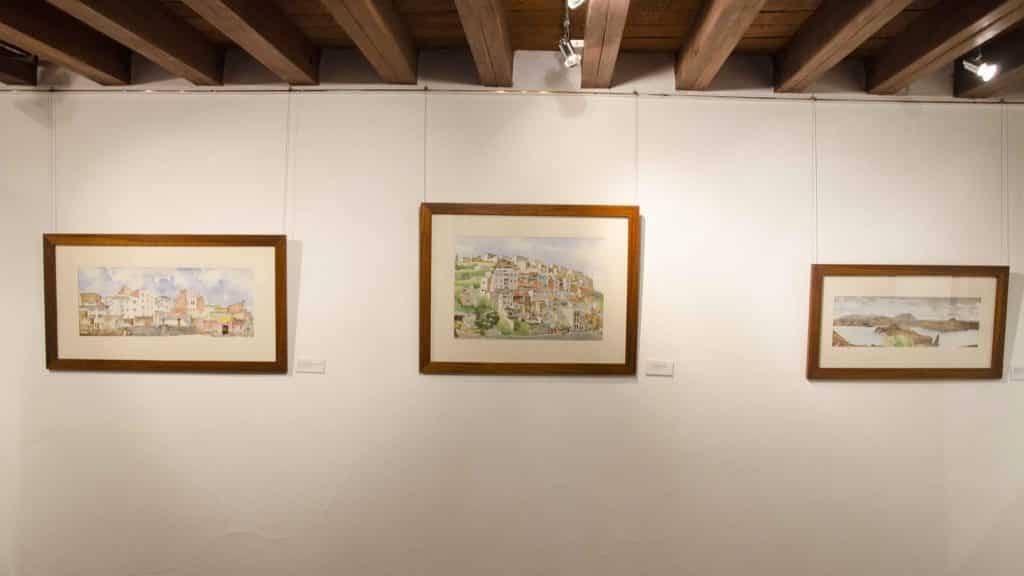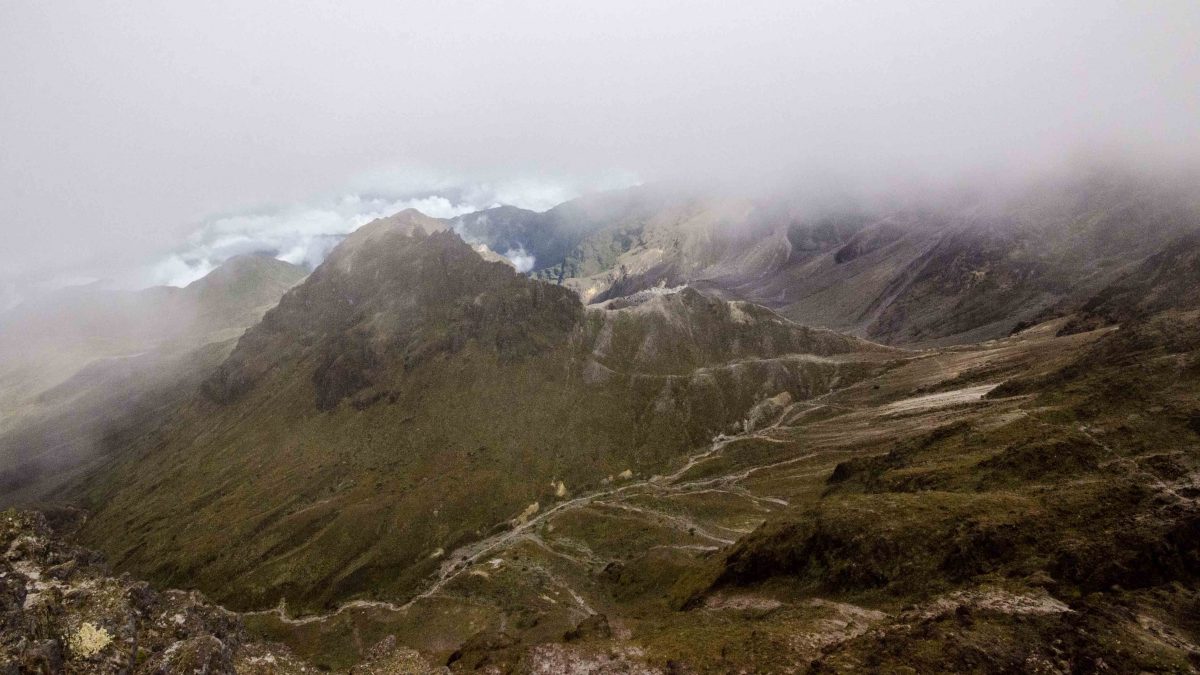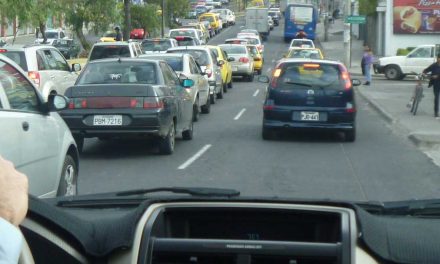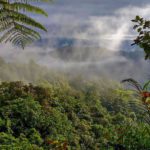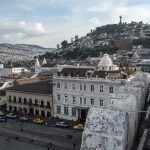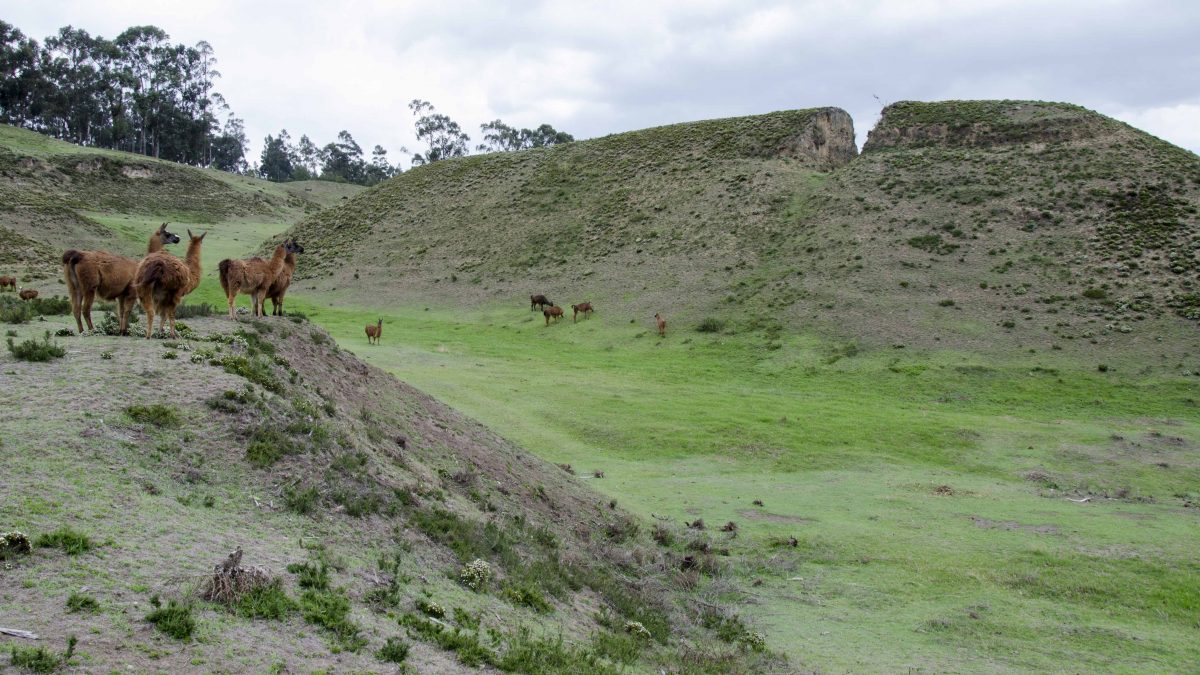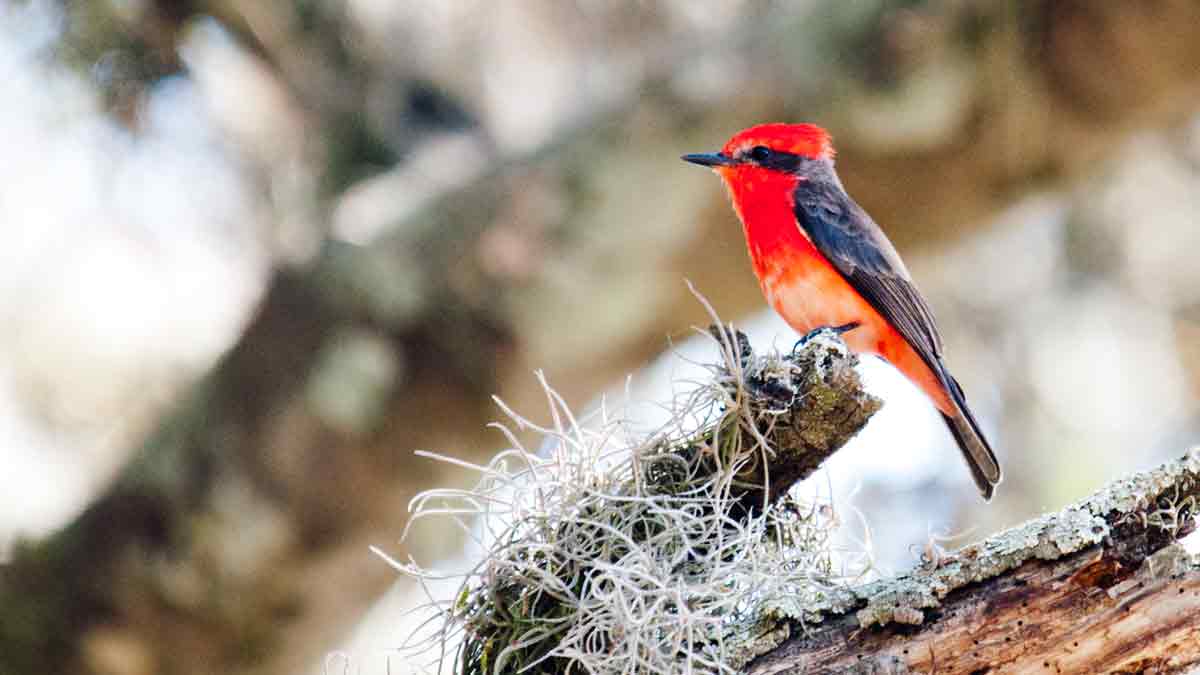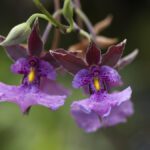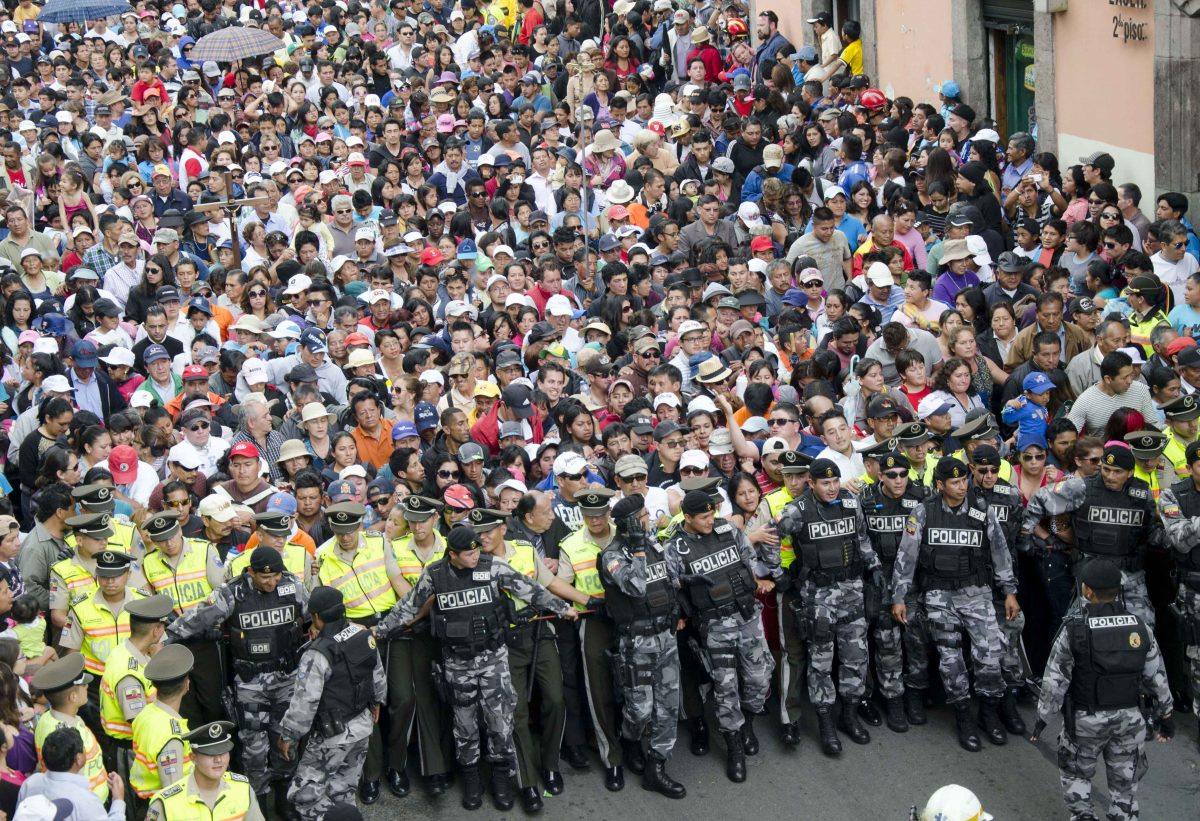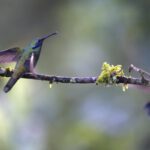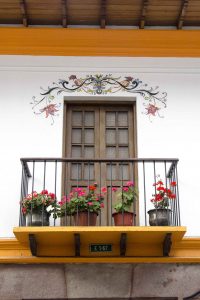 We entered this small neighborhood from Calle Junin at the corner of Juan Jose Flores, not far from the entrance to Monasterio Santa Catalina. Like most streets in Quito, the road was narrow, wide enough for a single lane of traffic and the occasional parked car. The sidewalks were neat and clean but I really preferred walking down the center of the street so that I could see the buildings on either side. And the traffic was quiet enough that this was completely possible.
We entered this small neighborhood from Calle Junin at the corner of Juan Jose Flores, not far from the entrance to Monasterio Santa Catalina. Like most streets in Quito, the road was narrow, wide enough for a single lane of traffic and the occasional parked car. The sidewalks were neat and clean but I really preferred walking down the center of the street so that I could see the buildings on either side. And the traffic was quiet enough that this was completely possible.
Although bright-red geraniums are a common sight in the Historic Center, it is rare to find well-watered and healthy plants overflowing with gorgeous flowers. It is even rarer to see a fully restored building painted in brilliant white, trimmed in golden orange, with a refurbished wooden roof and proudly refinished doors. Someone took the time to add the most stunning detailed flourish – hand-painted flowers set above each balcony door. Only a block or two in and I was falling in love with San Marcos.
Museums of San Marcos
A little further down the street, we found two lovely museums. Both are small and easily visited in a short time.
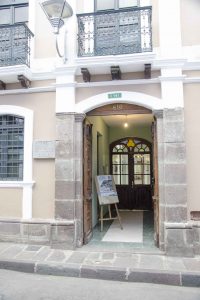 The first is the Architecture Museum of Quito. It’s entrance is understated, an open doorway with a very small placard advertising its existence. Inside, however, are two floors of rooms dedicated to the history of local architecture.
The first is the Architecture Museum of Quito. It’s entrance is understated, an open doorway with a very small placard advertising its existence. Inside, however, are two floors of rooms dedicated to the history of local architecture.
My favorite room was on the ground floor. A long table running the center of the room displays model buildings of the downtown Historic Center of Quito. Each door and window has been carefully crafted. In fact, this view of Quito made me want to stroll the streets yet again and look for new architectural treasures along the way.
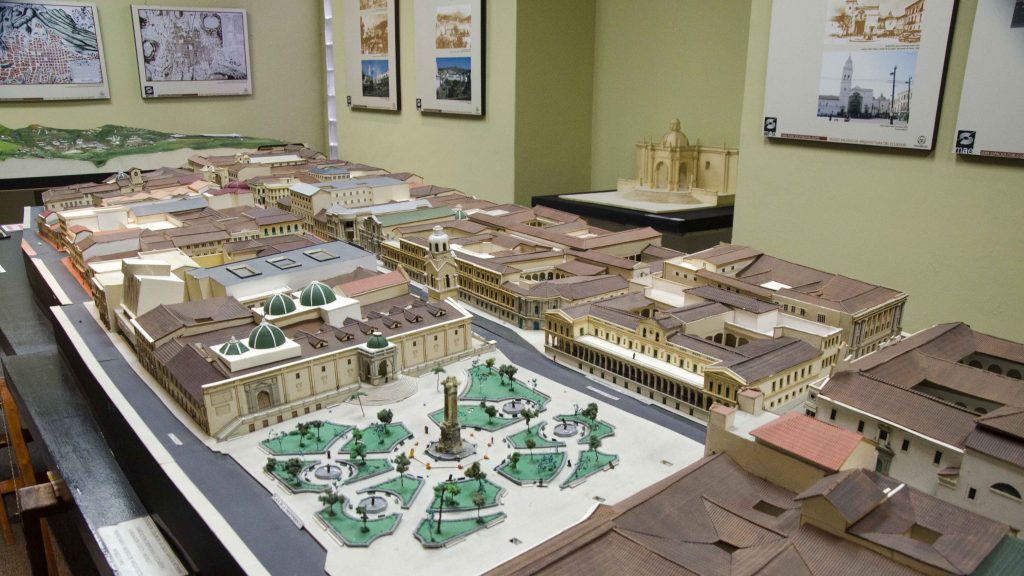
Along one side of the room is a topographic model of ancient Quito with many pre-Columbian sites marked on the hillsides. It is common knowledge that the Spaniards built many of the first churches and government buildings on sites that had ancient importance to the local people. But it is rare to see actual mention of these sites. This room alone makes a visit to this museum worth the time.
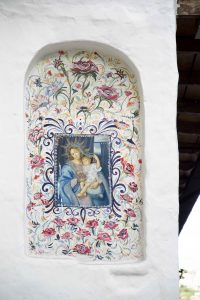 Still walking along Calle Junin, we came to a spot where the road narrows even more. A small niche in the wall of one of the buildings holds a beautiful painting of the Virgin Mary and Child with more flourishes of flowers. This wall belongs to the Watercolor Museum of Quito, another treasure of the San Marcos neighborhood.
Still walking along Calle Junin, we came to a spot where the road narrows even more. A small niche in the wall of one of the buildings holds a beautiful painting of the Virgin Mary and Child with more flourishes of flowers. This wall belongs to the Watercolor Museum of Quito, another treasure of the San Marcos neighborhood.
We learned that the museum is also a school and that artist Jherry Reinoso teaches classes on many afternoons. When we arrived, watercolor students were sitting along the street, using the beauty of the neighborhood as inspiration for their paintings.
Inside, the museum has a small collection of watercolors by Oswaldo Muñoz Mariño, for whom the museum is named. Muñoz Mariño, who died this last February, is famous in Ecuador. He was a well-traveled artist born in Riobamba. During his travels he met and maintained relationships with many well known Latin American artists like Frida Kahlo, Diego Rivera, and García Marquez.
The ambiance of this small museum, and the tranquility of watching artists at work, made me ready to break out my watercolors once again. For those of you who speak basic Spanish and are looking for ways to improve your language skills, taking classes in another subject is an excellent method of gaining local vocabulary. You might want to think about signing up for a watercolor class in San Marcos!
I am ready to head back to the small but intriguing neighborhood of San Marcos and see what else I can discover on the narrow streets of this colonial part of Quito. Who’s ready to join me?
Basic Info for the Museum of Architecture
- Address: Junín E1-81 y Ortiz Bilbao
- Hours: Tuesday-Friday 09:00 a 17:00; Closed on Monday and Weekends.
- Entrance fee: $ 0.50 (we entered for free)
- Telephone: 2 2280446
Basic Info for the Museo de Acuarela y Dibujo Muñoz Mariño
- Address: Junín E2-27 y Jimenez
- Hours: Tuesday-Friday 09:00 a 16:00; Saturday, Sunday, and Holidays 10:00 a 13:30; Closed Mondays.
- Entrance fee: none
- Telephone: 2 2571865 or 2957096
- Email: info@museoacuarelaydibujo.com
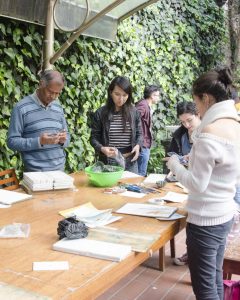 Classes offered on Wednesdays from 9:30 to 12:00 or 14:30 to 17:00 and on Saturdays from 9:30 to 12:00. Please call or email to sign up for any class. Make sure to check the website for summer schedules.
Classes offered on Wednesdays from 9:30 to 12:00 or 14:30 to 17:00 and on Saturdays from 9:30 to 12:00. Please call or email to sign up for any class. Make sure to check the website for summer schedules.
Museo de Acuarella
Museo de Arquitectura
Information For Your Trip
As with all city neighborhoods, be aware of your surroundings, use purses or bags that can cross your body, and do not keep expensive items in clear view or in easy to rob pockets.
- Direction by Car, use WAZE and look for San Marcos, Quito, Pichincha, Ecuador.
- Direction by Public Transportation for buses around Quito, use Google Maps, enter San Marcos, and click on get directions. Use the public transportation button to find the best route from your current location.

